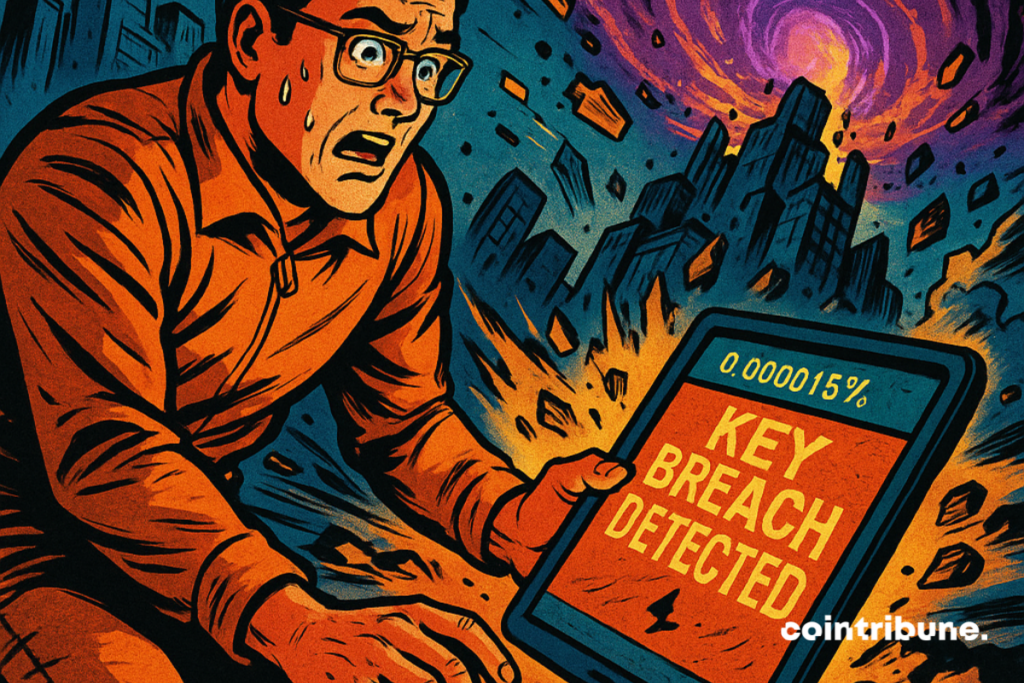Web3’s Quantum Blind Spot: How Naoris Protocol Closes It
In June 2025, the quantum computing world hit a critical milestone. Physicists at Oxford University achieved a world record with a quantum gate error rate of just 0.000015%, that’s one error per 6.7 million operations. Meanwhile, IBM announced its roadmap for Starling, a 200-logical-qubit fault-tolerant quantum computer expected by 2029. And at VivaTech, Nvidia CEO Jensen Huang declared that quantum computing is reaching a genuine inflection point. This convergence of breakthroughs signals something urgent: quantum technology is accelerating, and most of Web3 isn’t ready.

In Brief
- Quantum technology is advancing rapidly, threatening the cryptography underlying most of Web3.
- Adapting current blockchains would be complex, risky, and inefficient given the urgency.
- Naoris Protocol offers a native post-quantum solution, already operational and EVM-compatible, combining security, decentralization, and scalability.
The Blind Spot of Web3
Despite billions locked in DeFi protocols, bridges, and wallets, the vast majority of the Web3 ecosystem still relies on pre-quantum cryptographic schemes such as RSA or ECDSA. These technologies, designed in an era when quantum computing was only a distant hypothesis, are now threatened. A machine capable of running Shor’s algorithm could break the security of thousands of wallets or smart contracts in a matter of seconds.
Worse still, many blockchains depend on centralized validator nodes, hosted on traditional clouds, creating critical points of failure. This lack of preparation for quantum advances represents today the most dangerous blind spot of Web3.
Proof that Quantum Evolution is Accelerating
The evidence is mounting:
- Oxford sets a record with a quantum gate featuring an error rate of 0.000015 %, drastically reducing the need for error correction;
- IBM plans a fault-tolerant computer with 200 logical qubits by 2029, followed by a 2,000 qubit system in 2033;
- Microsoft and Google are also rapidly advancing hybrid quantum architectures;
- Nvidia, a key hardware player, confirms quantum computing is shifting from a research topic to an industry pillar.
This is no longer science fiction. It is a countdown.
Why Retrofitting Existing Chains Won’t Work
In the face of this threat, a simple update of existing blockchains will not suffice. Most current chains are built on hardcoded cryptographic signatures. Modifying these foundations would require:
- Risky hard forks;
- Wallet migrations;
- Liquidity fragmentation;
- And significant degradation of user experience.
Current Web3 is neither flexible nor ready to smoothly evolve toward a post-quantum world.
Naoris Protocol: Post-Quantum Security from the Ground Up
Naoris Protocol was not designed to adapt to quantum computing. It was built to face it.
Sub-Zero Layer
Naoris introduces an unprecedented technological layer, Sub-Zero, positioned beneath Layer 0. Compatible with all EVM blockchains, it uses post-quantum algorithms like Dilithium-5 and KEMs, approved by NIST. It integrates without hard forks or UX modifications.
dPoSec Consensus
The Decentralized Proof of Security mechanism transforms every device into a cybersecurity validator node. By performing real-time integrity checks, nodes receive rewards in $NAORIS, creating an economic incentive for ongoing protection.
Swarm AI Mesh
A network of decentralized artificial intelligences continuously monitors the ecosystem. Capable of detecting threats in real time and responding automatically, it ensures evolving and autonomous cybersecurity.
With Naoris, blockchains become immediately resilient to quantum threats without disrupting their operations. The infrastructure is already operational on EVM blockchains, with other chains being integrated.
From Testnet Traction to TGE
Since launching its testnet in January 2025, Naoris Protocol has shown impressive figures:
- 87,141,799 post-quantum transactions recorded;
- 914,522 active security nodes;
- 406,788,301 threats detected and neutralized;
- 3 million wallets created.
These results validate the protocol’s robustness and attractiveness. The Token Generation Event (TGE), scheduled soon, represents a unique opportunity for developers, investors, and builders to join a network ready to defend the future of Web3.
As the quantum world accelerates, Naoris Protocol stands out as the next-generation digital shield. By combining post-quantum cryptography, decentralized collective intelligence, and native compatibility with EVM standards, Naoris redefines the foundations of Web3 cybersecurity.
The TGE is approaching. Join the Naoris community on its website and on X today to participate in the emergence of a resilient, secure, and future-ready Web3.
Maximize your Cointribune experience with our "Read to Earn" program! For every article you read, earn points and access exclusive rewards. Sign up now and start earning benefits.

The contents and products mentioned on this page are in no way approved by Cointribune and should not be interpreted as falling under its responsibility.
Cointribune strives to communicate all useful information to readers, but cannot guarantee its accuracy and completeness. We invite readers to do their research before taking any action related to the company and to take full responsibility for their decisions. This article should not be considered as investment advice, an offer, or an invitation to purchase any products or services.
Investment in digital financial assets carries risks.
Read more